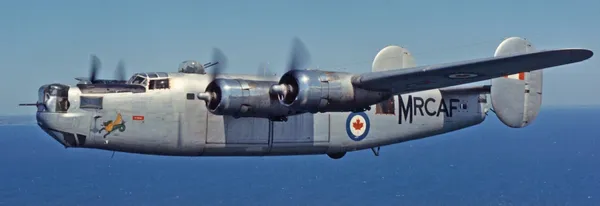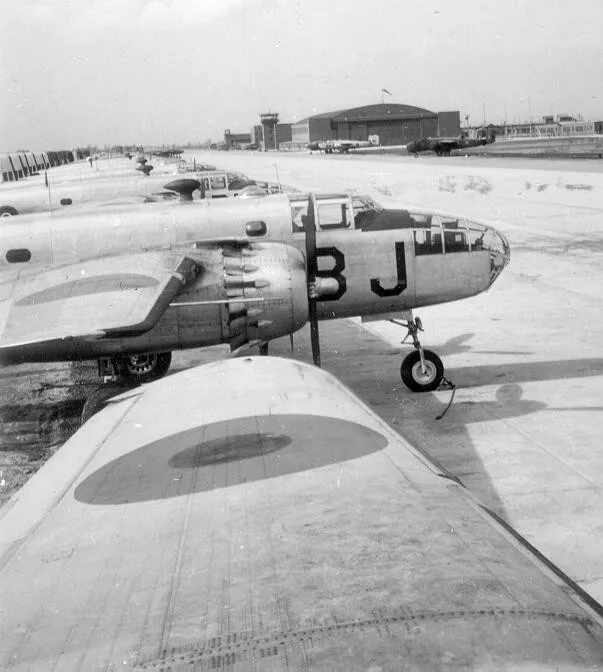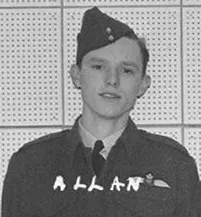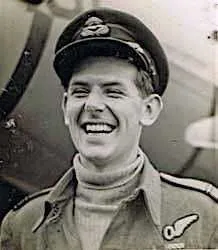Suggate, Alfred Cecil (Sergeant)
Killed in Flying Accident 1945-July-03


Birth Date: 1916-July-11
Born:
Parents: Son of Alfred Revill Suggate and Anne Roberts Suggate, of Wyke Regis, Weymouth, Dorsetshire, England.
Spouse:
Home:
Enlistment:
Enlistment Date: unkown date
Service
RAFVR
Unit
5 OTU- Operational Training Unit
Base
RCAF Stn. Abbotsford, British Columbia
Rank
Sergeant
Position
Service Numbers
1607162
This incident involved multiple aircraft:
- Liberator B. Mk. VI Serial: KG880
- Liberator B. Mk. VI Serial: KH107
All the above aircraft in the above list are referenced in this report.
Crew or Other Personnel
Liberator KH107
Liberator serial: KH107

Consolidated Liberator G.R. Mk. VIII, RCAF (Serial No. 11130) ex-USAAF Consolidated (Vultee) B-24L Liberator USAAF (44-50154)
ex-RAF (Serial No. 5009), ex-Indian Air Force (Serial No. HE773).
Currently preserved in the Canada Aviation and Space Museum Ottawa Ontario.
The Consolidated B-24 Liberator was an American heavy bomber flown by the RCAF during the Second Word War. It was designed with a shoulder-mounted, high aspect ratio Davis wing which gave the Liberator a high cruise speed, long range and the ability to carry a heavy bomb load. Early RAF Liberators were the first aircraft to cross the Atlantic Ocean as a matter of routine. In comparison with its contemporaries the B-24 was relatively difficult to fly and had poor low speed performance; it also had a lower ceiling compared with the Boeing B-17 Flying Fortress. Of the roughly 18,500 B-24s built in the USA during the war, 148 were flown by the RCAF on long range anti-submarine patrols, with the B-24 serving an instrumental role in closing the Mid-Atlantic gap in the Battle of the Atlantic. The RCAF also flew a few B-24s post war as transports.
Roughly half of all (RAF) Liberator crews in the China-Burma-India (CBI) Theatre were Canadian by the end of the war. John Muir of Vancouver flew the longest mission of the war: 24hrs, 10mins from Ceylon to Burma and back. (Kyle Hood) Harold Skaarup web page
Aircraft Images
Liberator KG880
Liberator B. Mk. VI KG880
Ex USAAF serial number 44-10385. Supplied by RAF for use at No. 5 OTU, Boundary Bay, BC. Coded "Y" shortly after arrival, later coded "VJ". Collided on runway at Abbotsford with KH107 on 3 July 1945, total of 9 casualties, all RAF.1944-06-08 Taken on Strength 2022-02-07
1945-July-03 Accident: 5 Operational Training Unit Loc: Aerodrome Names: Allen | Avery | Batley | Brandon | Brown | Elding | Gunter | Kennedy | Morris | Murphy | Scarborough | Sinclair | Suggate | Thomas | Whitaker
1945-08-17 Struck off Strength 2022-02-07
Liberator KH107
Liberator B. Mk. VI KH107
Ex USAAF serial number 44-672. Supplied by RAF for use at No. 5 OTU, Boundary Bay, BC. Coded "VJ" and "AQ", dates not known. Collided on runway at Abbotsford with KG880 on 3 July 1945, total of 9 casualties, all RAF.1944-08-09 Taken on Strength 2022-02-07
1945-July-03 Accident: 5 Operational Training Unit Loc: Aerodrome Names: Allen | Batley | Brandon | Gunter | Morris | Murphy | Sinclair | Suggate | Thomas
1945-08-17 Struck off Strength 2022-02-07
Unit Desciption
5 OTU (5 Operational Training Unit)
The Operational Training Unit (OTU) was the last stop for aircrew trainees. They spent 8 to 14 weeks learning to fly operational aircraft (Hawker Hurricane or Fairey Swordfish, e.g.). The instructors had experience in actual operations, and often were posted to OTUs after their operational tour.


